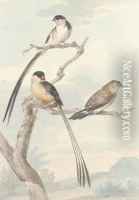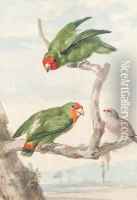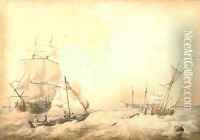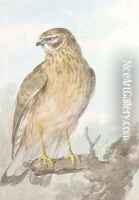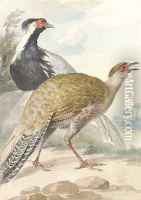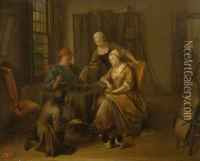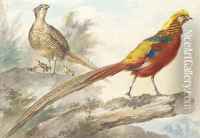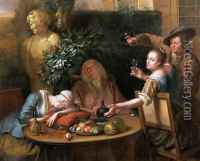Aert Schouman Paintings
Aert Schouman was a Dutch artist born in Dordrecht in the Netherlands on March 4, 1710. He was known for his diverse artistic talents, which included painting, watercolor, engraving, and wallpaper design. Schouman’s work primarily focused on natural history subjects, such as birds, as well as portraits and decorative wall hangings. He was part of an artistic family, with his uncle being a painter who likely influenced his early development.
Schouman began his artistic training at a young age under the tutelage of his uncle, and later he became an apprentice to the Dordrecht painter Adriaen van der Burg. His early works were influenced by the Baroque style, but he gradually developed his own approach, characterized by a lighter touch and a greater emphasis on detail, especially in his depiction of animals and birds.
Throughout his career, Schouman received numerous commissions from the aristocracy and other prominent figures of the time. His ability to capture the delicate features of birds and other wildlife in watercolor and gouache made him particularly popular among naturalists and collectors. In addition to his natural history illustrations, Schouman also produced portraits, historical scenes, and landscape paintings.
Aside from his work as an artist, Aert Schouman was also an art collector and a member of the Dordrecht drawing society 'Pictura'. He played a significant role in the artistic community and was involved in the training of other artists. His influence extended to his nephew, Martinus Schouman, who also became a respected painter.
Aert Schouman’s artistic legacy is notable for his contribution to the Dutch tradition of natural history illustration. His detailed and lifelike renditions of birds and animals provided valuable visual records that complemented the scientific descriptions of the time. His works are preserved in various museums, including the Rijksmuseum in Amsterdam and the Dordrechts Museum in his hometown.
Schouman continued to work until his later years, passing away in The Hague on April 28, 1792. His death marked the end of a long and productive career that had spanned over six decades, leaving behind a body of work that continues to be appreciated by art historians and enthusiasts of natural history art.

